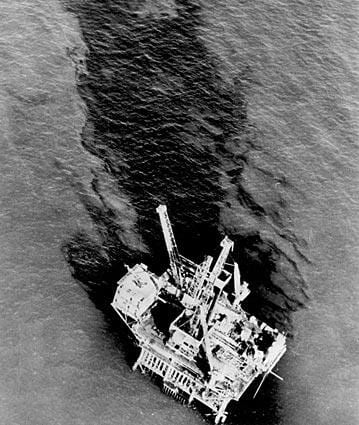Santa Barbara’s Dirty Secret – Oil
Living in Santa Barbara County, it is easy for many of us to believe that we are leaders with regards to sustainability, climate, and energy policy. With electric buses and bike lanes on every main road, it may come as a surprise to many that Santa Barbara is not nearly as “green” as it might seem. Santa Barbara remains a major player in extracting and exporting crude oil in a state that is claims to lead not only the country but the world in promoting climate action. In fact, Santa Barbara county is one of the largest oil producing counties in the state and California is one of the largest oil producing states in the US. While Santa Barbara’s City Council voted to run the city on 100% renewable energy by 2030, our county continues to facilitate Big Oil’s extraction and burning of fossil fuels. Developing 750+ new oil wells would lock the county into more oil production for decades to come at a time where we urgently need a rapid and just transition away from fossil fuels. This forces us to adjust the story we tell about Santa Barbara and recognize how its position as a globally significant player in fossil fuel extraction and production of carbon emissions undercuts our progress in sustainable development.
Santa Barbara is familiar with the disastrous social and ecological impacts oil drilling can bring. 50 years ago, the Santa Barbara 1969 Oil Spill gained national attention and helped mobilize the modern environmental movement. It remains the largest offshore oil spill in California’s history, and third largest in the country. Home to one of the most biodiverse marine sanctuaries in North America, the impact on local wildlife, not to mention businesses that depended upon it, were devastated. While ramping up onshore oil production, Santa Barbara hoped never to see such devastation again. But with oil spills it’s never a question of if but when. In 2015, Plains All American Pipeline, carrying oil from the offshore oil platforms inland, ruptured near Refugio State Beach. It damaged roughly 100 miles of coastline and cost an estimated $96 million in clear up costs alone.
Since 2010, 3,300 incidents of crude oil and liquefied gas leaks or ruptures have occurred in US, killing 80 people and injuring more than 389. Thousands more, particularly society’s most marginalized communities, are exposed to the industry’s toxic pollution and water contamination, threatening health and livelihoods every day. But by rejecting new oil production and demanding a just transition away from fossil fuels towards a renewable economy, we have a chance to align our lawmakers’ actions with our community’s values and change Santa Barbara’s relationship with oil forever. However, if we continue to extract at this rate, Santa Barbara can no longer pretend to be a climate leader, no matter how our vehicles are powered. The industry’s profits will be privatized and it’s external costs swallowed by the community just as they are elsewhere.
It is time to shed the light on Santa Barbara’s dirty little secret so that we can forge a new story and transition our county out of fossil fuel dependency as quickly as possible.
Learn more about current oil projects and proposals in the county here.

The 1969 Oil Spill. LA Times.